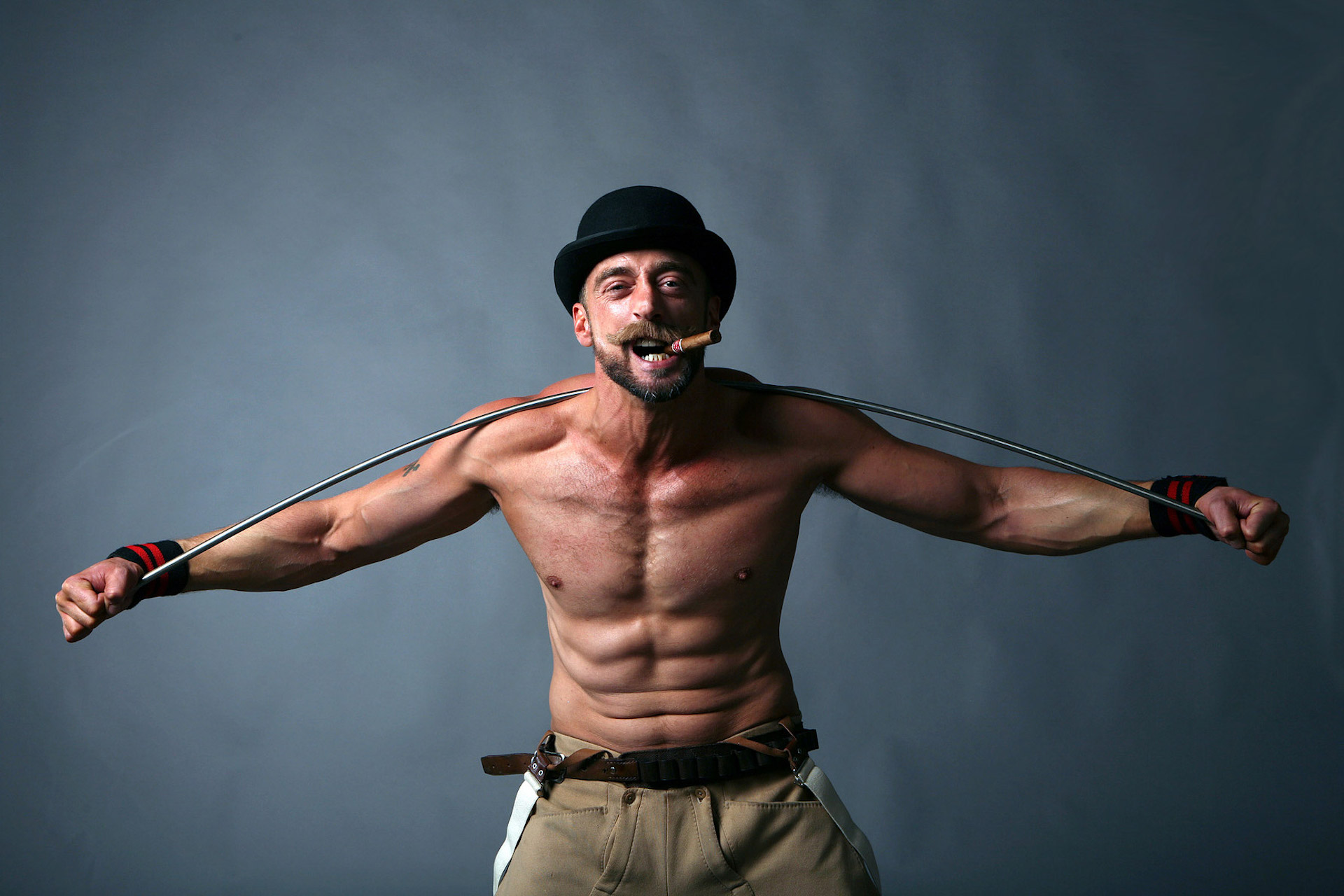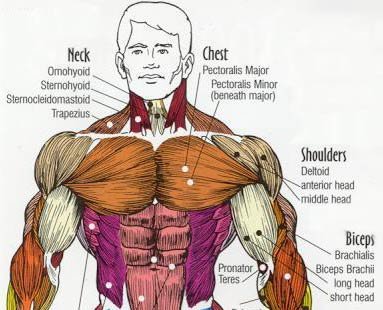Recovery from aches and pains is here. As we age, our body needs help with dealing with soreness. There is an amazing product that helps with the recovery process. Restore and live better with Joint and Muscle Support through the revolutionary dietary supplement purerecovery.
Life is movement. With movement, pain and inflammation occurs. Pain, swelling and soreness have found their match in purerecover. With Patented curcuminoid technology. It is 7 times more effective than standard curcumin.
Curcumin is an All Natural Extract. No synthetic ingredients. Natural joint and muscle support. Immune system support.
Aches and Pains associated with age can be reduced with purerecovery. Don’t let sore muscles get in your way of a healthy and full life. Get started with purerecovery today.
 Go here to Naturally help your body with pain and joint and muscle soreness.
Go here to Naturally help your body with pain and joint and muscle soreness.
Recovery:
Your bodies ability to Recover and the speed to which you do impacts your life directly. The sooner you can be moving again. Movement is needed for our everyday life, and we can do it without pain. It is all in the recovery process and purerecovery is here to get us there faster, easier and All Natural. This is what your body needs to keep moving and to keep living better. Keep up the pace.
 Natural Ways to assist in Pain Relief and aiding anti-inflammatory needs in addition to purerecovery
Natural Ways to assist in Pain Relief and aiding anti-inflammatory needs in addition to purerecovery
- tomatoes.
- olive oil.
- green leafy vegetables, such as spinach, kale, and collards.
- nuts like almonds and walnuts.
- fatty fish like salmon, mackerel, tuna, and sardines.
- fruits such as strawberries, blueberries, cherries, and oranges.
Add purerecovery to your Life and Live Better Here
 The product speaks for itself. Get your’s now, get it into your Body, and live life to the fullest for the duration. Don’t let sore muscles stand in the way of your happy and healthy life.
The product speaks for itself. Get your’s now, get it into your Body, and live life to the fullest for the duration. Don’t let sore muscles stand in the way of your happy and healthy life.
End the Pain, use science to reduce pain, swelling and soreness. We have the patented product here to help you. Get it and get Living in a better, and less painful way. This is a life changing product. This product is here to help you live and do more without the pain.
Add purerecovery to your Life and Live Better Here
A strongman is a man who competes in strength athletics. In the 19th century, the term strongman referred to an exhibitor of strength or similar circus performers who displayed feats of strength. When strength sports were codified into their own categories such as weightlifting, powerlifting, etc., Strongman became its own specified category in strength sports.
Training
Training for strongman involves building overall strength in the gym and training with competition implements to gain familiarity. In the gym, it is necessary to train the entire body for strength, especially with variants of the squat, deadlift, and overhead press. Also important is explosive power, developed by weightlifting-style lifts, and cardiovascular conditioning. Grip strength must also be developed.
Although you can do general strength training, at a typical gym, training with a strongman regimen requires equipment not typically found in a gym. Some equipment used in a strongman competition would have to be found custom-made or at a strongman gym. These equipment include Atlas Stone, Log (Log Press), Farmers Walk Bars, Yoke (Yoke Walk), Keg (Keg Toss), a vehicle.
Another part of a strongman’s training is its intense diet regime. A top athlete in strongman would need to ingest upwards of 10,000 calories a day.
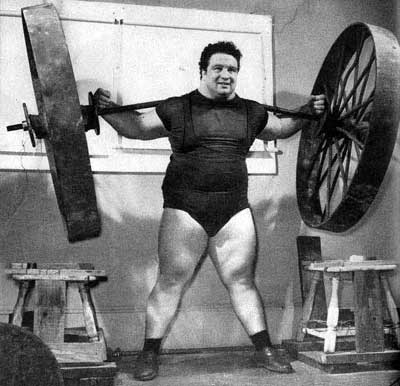

In the past, strongmen would perform various feats of strength such as the bent press (not to be confused with the bench press, which did not exist at the time), supporting large amounts of weight held overhead at arm’s length, steel bending, chain breaking, etc. Large amounts of wrist, hand, and tendon strength were required for these feats, as well as prodigious oblique strength.
In the late 20th century the term strongman evolved to describe one who competes in strength athletics – a more modern eclectic strength competition in which competitors display their raw functional strength through exercises such as lifting rocks, toting refrigerators, pulling trains, towing an eighteen wheel truck behind them, and etc. The most famous competitions of this type are the World’s Strongest Man, the Arnold Strongman Classic, the Strongman Champions League and the Giants Live tour, however many countries hold national-level competitions.
In recent years, interest in the sport at the grassroots level has skyrocketed, leading to the spontaneous formation of local clubs, loosely affiliated with provincial/state and national associations.
Many sports-specific training facilities have begun to incorporate movements associated with strongman competitions into their general training schemes, albeit with lighter weights used, e.g. tire flips, sled drags, object loading or carrying, log pressing, farmer’s walks and so on.
Strongman events are unlike other strength sports because they don’t have set movements or events. There was a time when events were unannounced prior to a strongman competition. Folks would find out what torture the event coordinator had in store for them when they arrived. These days, competitors have a general idea of the events and weights that will be used in advance of the competition. But there’s no guarantee that you will be able to get your hands on the actual implements, or even a similar piece of equipment, before contest day.
That being said, there is no excuse for showing up to a strongman competition unprepared.

The Mental Game
The best tip I can offer you, and this tip can be used for any endeavor in your life, is to find training partners who are not only stronger than you, but are willing to challenge you to push yourself past your limits. Pushing yourself past your own set limits is the essence of strength sports. I firmly believe that most training plateaus are the result of mental barriers rather than physical limitations.It’s going to be a lot of volume, a lot of weight, and a lot of torture, but when you’re done, you’re going to wish it was time to do it again.
You don’t have to go all out on this, but you should be aiming to work up to a weight where you can clean and press the weight for 5 hard reps. Every set, from warm-up set to final set, should be 5 reps; clean and press each rep. This will get your blood pumping, warm up your muscles, and get your CNS ready for the events to follow.
Remember, when you get the bar to your shoulders, it doesn’t matter how you get it over your head. You can push-press, jerk it, split jerk it, whatever – just make sure you’re pressing! You should be really tired after this – seeing spots just means you’re doing it right! In this article, I will go over some of the main events in a typical strongman competition, and how to simulate them in your neighborhood gym.

The Deadlift
The deadlift is the bread and butter of the strongman competitor’s training. There will be some sort of deadlift variation in every contest, so if you want to be competitive in the sport, the deadlift is where to begin.
You can train the deadlift in almost any gym, since you only need a bar and plates. Deadlift at least one day per week, building up to a heavy weight on working sets. If your deadlift is weak, add a second day of programming that includes a different variation (deficit, banded, paused, etc.) at a lighter weight.
Ditch the straps. Grip and forearm strength will take you a long way in this sport, and there is no sense in missing out on extra grip work while training. If straps are permitted in a contest, make sure to practice with them first, but do the majority of your deadlift training strap-less.
Deadlift variations found in competition:
- Conventional Deadlift: This is a standard deadlift (no sumo stance). You will typically have three attempts to hit a max single, with 50lb jumps for men, and 20lb jumps for women.
- Axle Bar: A standard barbell is 1 inch thick, while an axle is 2 inches in diameter. If you don’t have access to an axle bar, purchase a set of fat gripz and slap them on a standard barbell.
- Deficit Deadlift: A great way to train for deficit deadlifts without a platform is to stand on plates (3-4 inches for men, 2-3 inches for women). This will also improve your conventional deadlift if you struggle to break the weight off of the floor.
- Hummer Tire/18in Deadlift: Instead of pulling from below the ground like in a deficit deadlift, you are pulling the bar from a higher position. To simulate this event, stack plates on the ground under the plates on your bar. For an 18-inch deadlift, the distance from the ground to the bar should be 18 inches.
- Car Deadlift: A trap bar is a good tool to train car deadlifts. The car deadlift platform will typically have handles at your sides, similar to the grip of a trap bar. Load it up heavy, and go for reps. A shrug machine makes a great car deadlift simulator.
- Car Squat: I am grouping the car squat in with the deadlift because there aren’t many squatting events in strongman. Even so, squats are an essential lift that will increase your overall strength, so don’t neglect them. The best way I have found to simulate a car squat is on a Smith machine. You will certainly get some funny looks, but at least you’re not curling in the squat rack.
The Press
Being a good presser is necessary in the sport of strongman. Strict press, push press, and single arm press are all important exercises to improve your overhead strength. Pressing should be done on a weekly basis with additional shoulder work to increase shoulder stability to support heavy loads.
Pressing variations found in competition:
- Log Clean and Press: It is difficult to train for a log press without a log. Barbell clean and jerks are a great assistance tool, as well as pressing overhead with a Swiss bar, but moving a log is vastly different than a barbell. If you can, go out of your way to find a log to train with.
- Axle Bar Clean and Press: Similar to the axle deadlift, this movement can be simulated by putting fat gripz on a barbell. Remember, the axle bar does not spin like an Olympic weightlifting bar. In addition to the conventional clean, another method that can be used is the continental clean.
- Circus DB: The Circus dumbbell is a single-arm press where the dumbbell can be brought to the shoulder with two hands and then pressed or jerked with one arm. Training for this event can be done by performing single arm dumbbell presses, and by adding fat gripz onto the dumbbells for an extra challenge.
- Viking Press: The Viking press uses a bar with two handles stemming off of a fixed point. The press extends up and forward, towards the fixture, instead of straight up like an overhead press. Kalle Beck of Starting Strongman has a great Viking press simulation.
Loading Events
Loading events in strongman competition present endless possibilities. The best way to prepare for a loading event is to pick up a heavy object and place it on a platform or over a bar. You will expend a lot of energy on these events, so I recommend making one day of your training week an “event day,” and practice multiple event movements, including loading. This will help you gauge the maximum weight you can load if you are already fatigued from deadlifting or squatting.
Loading variations found in competition:
- Atlas Stones: These events typically involve moving stones over bars or on to platforms of varying heights. The best way to train for atlas stones is to use them. I highly recommend finding a gym that has some, and practicing with them. Many CrossFit gyms are investing in stones, so they are fairly easy to find.
- Sandbag: Sandbags are a versatile implement that can be carried, loaded onto a platform, or loaded onto something that can then be dragged. They are probably the most affordable and easiest of all of the equipment to make, so I suggest buying your own and using it at home.
Carrying Events
Carrying, holding, and moving events may be the simplest to train for. The best way to prepare for moving events is to pick up a heavy object, and move with it. If you know what implement will be used in competition, find an object similar in size and weight, and practice carrying it. These events can vary, but typically they are measured by time in a set distance, or max distance in a set time. This is another item to add to your event training day, separate from conventional lifting days.
Carrying events found in competition:
- Sandbag Carry: The sandbag is typically bear-hugged or carried in front of the body, no shouldering allowed. These events can be for time or distance.
- Keg Carry: Similar to the sandbag, the keg carry event is a front-hold carry. Kegs are fairly easy to find, so go out and buy one, fill it up with water or sand, and carry it for 100ft runs.

- Conan’s Wheel/Zercher Carry: These are front-loaded carries with the bar resting in the crook of your elbow. Train with a heavy barbell and do max holds. Practice breathing with the weight pushing down on you. This event never feels good, so it’s best to build up a tolerance with being uncomfortable.
- Yoke Carry: Unlike the carries mentioned above, the yoke walk is a posterior load, with the weight resting on your back and shoulders. To simulate the yoke carry, load a heavy barbell and place it on your back. Heavy holds are great for core stability, but walking with the weight on your back is ideal for competition training.
- Farmers/Frame Carry or Hold: The farmer’s handles and frame are gripped from the side of the body and deadlifted to a standing position. At this point, they will either be carried or held in place. The best way to prepare for these events is with a trap bar or heavy kettlebells. In competition, the weight will be very heavy, probably close to a max deadlift. These events are an excellent test of both physical and mental strength.
- Tire flips: This is the event that is difficult to simulate in the gym. If you know that this event is going to be in your competition, find a tire and start flipping.

Pulling Events
If you ask the average person what they know about strongman, they will probably say “aren’t those the guys who pull trucks?” Pulling events are always a crowd favorite, so you better step up your game. The key in this event is to stay low and keep moving. Once the wheels start turning, momentum will be in your favor, but it is hard to start again once you stop.
Truck pull events can either be a harnessed pull with the truck behind you, or a seated pull facing the truck. They are typically a set distance for time. The best way to train this event is to put a car or truck in neutral, harness yourself to it, and pull. If that isn’t an option, sleds are a great alternative. You can find inexpensive options online if your gym does not have a sled.
Train What You Can, Expect the Unexpected
This is not an all-inclusive list of events, but part of the fun in strongman is expecting the unexpected. Your first priority in strongman is being strong. Without strength, you will not get very far. Focus your training around the deadlift, overhead press, and squat. Use weighted holds and carries for core strength, and your assistance work should include cleans, rows, curls, abs, and grip work.
For specific training plans, check out these programs:
- A basic plan for those with limited access to events from EliteFTS
- A list of training resources and a free 12-week program from Starting Strongman
- A 12-week training cycle by Breaking Muscle
If you absolutely cannot find a gym with strongman equipment to train once a week, invest in a few implements and train at home. A sandbag, keg, sled and a pair of fat gripz should be enough to get you started.Now go forth and do strong things!
More Strongman Strategies and Secrets:
The 7-Day Workout Challenge
Get Even Better in One Week
06/26/18
A key here is to make sure each workout doesn’t exceed 45-50 minutes. This is achieved via supersets, giant sets, and short rest breaks.
You might need to find a new gym for this week because you won’t have time to chit-chat. Also, you’ll be too busy breathing hard to make small talk! Your heart rate will be way up and the sweat will be pouring.
You can expect to lift less weight than normal due to the cumulative fatigue of the short rest periods. That’s fine. Instead of focusing on moving big weights, chase the pump.
On the seventh day, the full-body HIIT session should include upper and lower body and take no longer than 20 minutes. Skip rope, do burpees, sprint, swing kettlebells, use battle ropes… basically anything to get your heart rate up. Focus on variety; don’t just do 20 minutes of a single exercise.
Train every single day for one week.
Most people don’t train this often, but I’m a believer in high frequency training. Here’s my suggested training split:
- Sunday: Chest, shoulders, and triceps
- Monday: Back and biceps
- Tuesday: Quads and hamstrings
- Wednesday: Chest, shoulders and triceps
- Thursday: Back and biceps
- Friday: Quads and hamstrings
- Saturday: HIIT (High Intensity Interval Training), full body
Use all new exercises for one week.
Most likely, you’ll come up with flat bench, back squat, and conventional deadlift (the big three, of course). There’s probably a barbell overhead press in there, and maybe a dumbbell row, chins, dips, and lunges if you’re smart. If you did at least one set of it, write it down.
Now, for this coming week, your mission is to keep training with the same split (though not necessarily the same sets and reps) but NOT use any of those exercises. It could be as simple as using semi-sumo deads instead of conventional, dumbbell bench instead of barbell, and neutral-grip chins instead of pull-ups.
Or you could finally decide to start pressing the kettlebells your gym has stashed in the corner, hopping on the leg press you made fun of for no valid reason, and using the preacher curl machine that pretty much every bodybuilder with big arms has used.
This new-exercise-only week will accomplish a few things:
It’ll make you flex your programming muscles. If you simply don’t know how to effectively train without your precious Big Three, you’ve got some learning to do. Not being able to rely on the same-old-same-old means, you’ve got to put some effort into thinking about why you’re using a specific exercise, and then make an intelligent choice to determine the next-best tool for that job.
It’ll refresh your technique on exercises you haven’t used in a while. Brushing the dust off “old” exercises is never a bad thing, especially if it reminds you how much you like throwing big weight overhead in dumbbell shoulder presses, which gets you to plug them in more consistently for the next month or two.
Lastly, this will not only give your joints some variety from the wear and tear they’re typically beaten down with, but you’ll automatically be using different support muscles and providing new growth stimuli. So don’t be surprised if you have more DOMS than usual this week, as your muscles are being hit by new angles and in slightly different patterns.
The old cliche is true: If you do what you’ve always done, you’ll get what you’ve always got. But even if you’ve gotten decent results, a bit of strategic training variety will always help to kickstart even more progress. First, the change itself is different and new.
That means coming into the gym with no set program, and no plan for the deep details on what you’re going to train, other than (maybe) the muscle groups you intend to hit for the day.
If you’re an experienced lifter who’s lived by rigid programming your entire life, that’s going to come as a huge shock. But it can also be a great learning tool to force you to understand how to put your knowledge to good use.
Don’t count your reps. Don’t count your sets. Do isolation work, chase a pump, and focus on muscle fatigue if your goal is hypertrophy.
If your goal is to get stronger, base things off of your rates of perceived exertion (RPE), not the numbers on the bar and how they relate to your “max percentage.”
If you feel like you don’t have it in the tank some days, don’t push it. If you feel like you’ve got extra gas in the tank some days, then by all means have a two-hour workout that includes 8 exercises for one muscle group. Choose exercises that work best for you by feeling – not exercises that are laid out for you in your program.
Lots of people fear-monger themselves into thinking that if heralded or popular exercises aren’t included in their workouts then their program is inferior. In truth, it all depends on the person and what works for him.
It’s a valiant idea to squat or deadlift three days per week, but no one talks about the collateral damage that could potentially place on your spine or load-bearing joints.
If you haven’t tried this yet for a full phase, let this be your chance to toy with the idea. Your body will probably thank you, and you’ll learn a whole lot in the process if you take it seriously.
Attention weight lifters, bodybuilders, or anyone
looking to get a stronger, more muscular physique…
“How A Skinny Kid With Asthma Achieved
a 452 Pound Bench Press & Packed On 75
Pounds Of Muscle Mass In The Process!”
Dear fellow weight lifter,
I have a few questions I want to ask you. Please answer them honestly.
Would you like to quickly and easily increase your bench press… so you can show off to your friends and lifting buddies in the gym… benching more than any of them!
Would you like to drastically increase your power and strength… so you become bigger, better, faster, and stronger for your sport or hobby?
Would you like to pack on some lean muscle mass… so you’re proud and confident enough to take your shirt off and walk the beach?
Would you like to have a powerful, muscular physique that turns heads and gets you noticed… so you can walk with your head high in the air, full of confidence?
If you answered “Yes” to any of these questions… I have some important news for you. 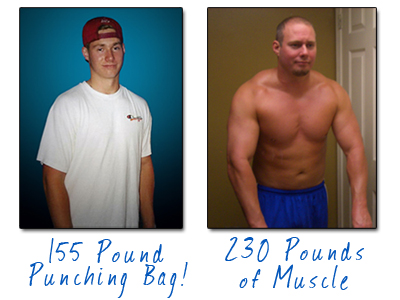
I promise you. In fact, if you increase your bench press by 20 or 30 pounds in the next month or so… you’ll pack on at least 10 pounds of muscle. Maybe more.
How can I say that? Because year after year, time after time, I’ve seen it happen so many times.
You’ll see right below how I was able to pack on 75 pounds of muscle mass between high school and college.
Look, here’s the truth: You’re only going to gain muscle mass if you get stronger. Because when you force your body to lift more weight… you HAVE to get stronger and add lean muscle mass to handle that additional weight.
In other words… when you have to lift more weight… your body reacts to the additional stress you’re placing on it BY ADDING MORE MUSCLE TISSUE!
If you keep lifting the same amount of weight, over and over again, your body has NO REASON to get stronger OR gain muscle. It can already handle the weight you’re used to.
But when you keep lifting more and more weight… your body must adapt, get stronger, and add muscle to keep handling that additional weight.
That’s how muscle gains are made: It’s by continuously trying to get stronger. When that happens, your body adds more muscle mass to handle this additional stress that’s placed upon it.
And you want to know what else?
The more muscle mass your body has… the more calories you will burn… and the more body fat you’ll lose… even when you’re resting!
It’s true… muscle mass is a very active tissue and it takes a lot of calories to maintain.
Look, if you’re skinny now… you don’t have to worry about that. You don’t have any fat to lose, so you’ll just end up packing on more size and muscle.
Back to the promise and why the best press is important: The bench press is the easiest lift to keep track of when it comes to recording your weights. It’s easy to keep progressing up on the bench press. Most gyms have those little 2 ½ pound plates you can keep adding.
Other exercises are tougher to keep increasing weight on… because you can’t keep going up in small increments. It’s either5 pounds, 10 pounds, or nothing.
And that’s a big jump and cannot be done every single week.
But 2 ½ plates could be a goal of yours every single week. It’s doable and manageable.
And guess what… each time you lift a little more weight… your body will react by adding strength and muscle to handle that additional weight.
If You’re Not Focusing On The Bench Press… You’re Missing Out On A Ton of Muscle and Strength That Could Be Yours!
That’s the SINGLE BIGGEST reason you need to start focusing on lifting more weight on the bench: So you can gain more muscle mass!
Not only that… the bench press is a very intense and demanding exercise for your entire body.
When you do a heavy and intense bench press… you can shock your muscles into growing faster than they usually would. And because of the intensity of the bench, your body releases a ton of anabolic hormones into your bloodstream. Things like testosterone and human growth hormone.
So bottom line… if you focus on increasing your bench press… and the amount of weight you lift on the bench press, you WILL gain muscle and lose fat. And as a result… you’ll look bigger, more muscular, and also leaner.
Again, I’ve seen it time and time again.
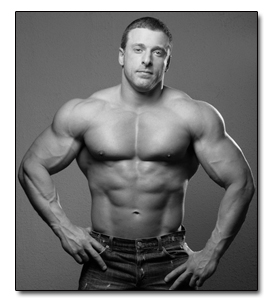
3 Reasons Why You’ll Want to Focus on Increasing Your Bench Press
| As you probably already know… having a big bench press is like a badge of honor. Plain and simple… it gets you respect and attention in almost every area of your life. It’s a measuring stick that you use with your buddies. The one with the biggest bench is usually the most respected. The strongest is usually the most respected (and most feared!) | |
| Having a big bench usually means you’re strong and in shape. In fact my football coaches in college were dead serious about knowing how much I could bench press and tested it several times a year. You see they knew something that most people don’t….. | |
| Increasing your bench press will also increase the amount of muscle mass you have on your entire body! It’s true… and it’s because of 2 reasons. First, when you keep lifting more and more weight, your body must add muscle mass so that it can handle that additional stress (weight) you’re placing on it. And second, heavy intense lifts like the bench press releases anabolic hormones into your bloodstream… things like testosterone and human growth hormone. These are the male muscle builders that help you pack on muscle. |

